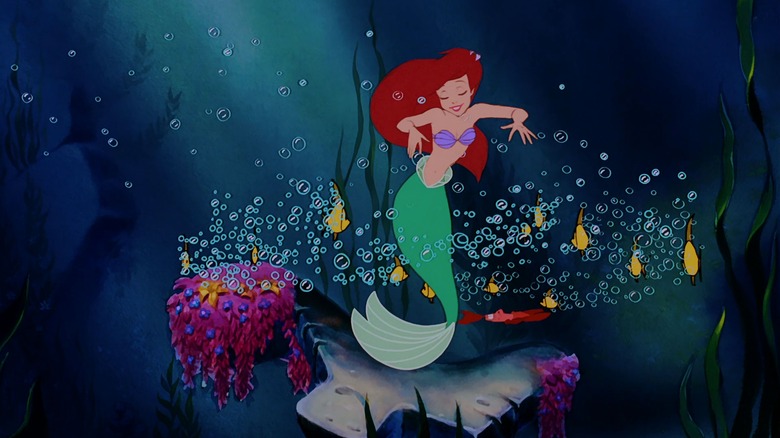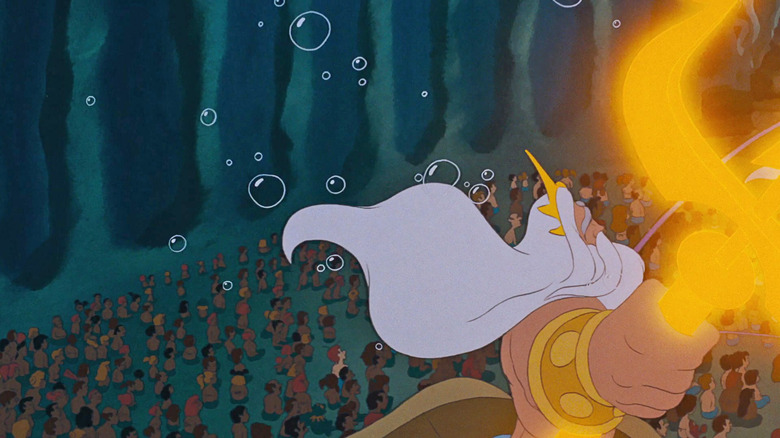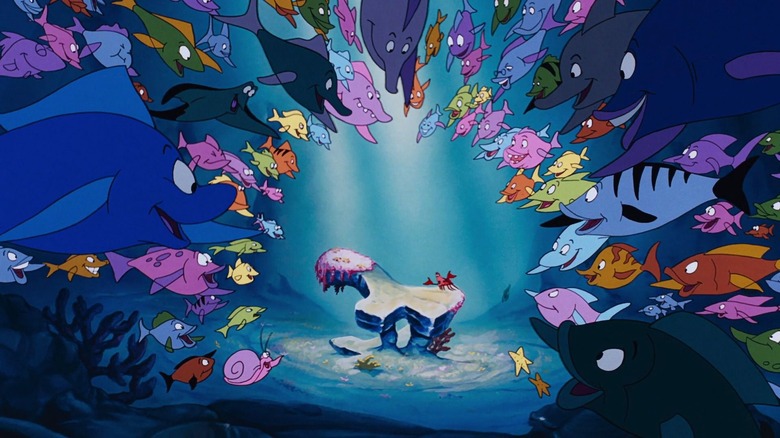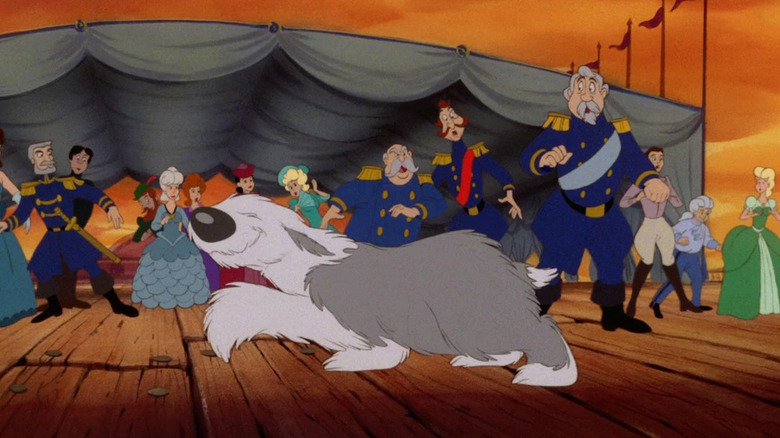The Little Mermaid Has Some Surprising Cameos That You Might Have Missed
Working as an animator is a tedious process. Drawing picture after picture can get a little boring, and it's not uncommon for an animator to start throwing in a few fun background details and in-jokes just to keep their minds occupied. Looking at the backgrounds of many animation productions may reveal caricatures of the animators themselves, references to other projects the animators may have worked on, and — as has been widely speculated — the occasional blue joke.
This was certainly the case with the production of 1989's "The Little Mermaid," a well-moneyed feature based on the 1837 Hans Christian Andersen tale. While stories of the aroused minister may be greatly exaggerated, animators on "The Little Mermaid" still managed to sneak in a few fun, and certainly more appropriate, cameos throughout the film. Anyone with a sharp eye, and a quick finger on the Blu-ray player's pause button, will likely be able to spot the likes of Goofy, Donald Duck, Mickey Mouse, Kermit the Frog, the King and the Grand Duke from Wilfred Jackson's, Hamilton Duke's and Clyde Geronimi's "Cinderella" (1950), and The Incredible Mr. Limpet.
Kermit, Goofy and Donald
In the above screenshot, sitting in the crowd watching King Triton — right near the picture's bottom, middle edge — is Kermit the Frog. The person sitting nearby Kermit also appears to have antennae, and may perhaps be Cindy-Lou Who from "How the Grinch Stole Christmas," but it's hard to say. These figures were drawn into the crowd shot by one of the animators on the film, and co-director Ron Clements, who noticed, allowed it to stay in the film just for funsies. Indeed, neither the directors nor the animators even expected those details to be noticed; they fly by far too quickly to be seen on the big screen in a theater. The only people expected to see it might have been enterprising projectionists with magnifying loupes.
It's notable that Disney did not possess the rights to The Muppets when "The Little Mermaid" was in production in 1988. Disney president Michael Eisner was in negotiations with Muppet creator Jim Henson, who was offered $150 million for both The Muppets and the Sesame Street characters. But Henson repeatedly refused over "Sesame Street," feeling that a giant corporation shouldn't own something intended to teach children about gentleness and spelling. When Henson died in 1990, Disney secured distribution rights to The Muppets, although they did not own the characters. Disney still distributed "The Muppet Christmas Carol," "Muppet Treasure Island," and "Muppets from Space," as well as "Muppets Tonght," which aired on Disney's ABC network. It wouldn't be until 2004 that Disney bought The Muppets outright.
The mermaids in "The Little Mermaid," it should also be noted, are saltwater creatures, and Kermit, a frog, would be a freshwater animal. I'm guessing Kermit was equipped with some sort of special breathing apparatus. A second later in that same shot, one can see other animals that would need specialized breathing devices: Goofy, Donald Duck, and Mickey Mouse can be glimpsed at the front edge of the crowd in front row seats, likely for Disney employees. However, one needs to be quick to freeze frame right on the classic Disney trio.
The Incredible Mr. Limpet
Arthur Lubin's "The Incredible Mr. Limpet," based on the 1942 novel by Theodore Pratt, is a 1964 film starring the legendary Don Knotts as a naval bookkeeper who falls into the ocean and finds himself magically transformed into a fish. The underwater sequences, complete with a menagerie of talking sea life, were realized in animation by Warner Bros.' animation studio and overseen by the legendary Robert McKimson (the main creative force behind Foghorn Leghorn). Thanks to constant rotation of "The Incredible Mr. Limpet" on television in the 1980s, Gen-Xers are likely all familiar with the friendly man fish.
Mr. Limpet, in fish form, was blue and wore a pince-nez. He also retained some of Don Knotts' facial features, including his friendly, bespectacled eyes. If one looks closely at the above shot from "The Little Mermaid," which appears in the film at the very end of the "Under the Sea" musical sequence, one can see — at about 1 o'clock — Mr. Limpet hidden in the crowd.
The Unnamed King
A little easier to spot were two characters from the 1950 film version of "Cinderella." During the final wedding scene in "The Little Mermaid," several animal characters gather together to create a ruckus and prevent the wedding between human Ursula and Prince Eric from happening. A large dog runs through the ceremony, and a fowl-mouthed seagull (Buddy Hackett) quacks in the villainous bride's face. During the animal conflagration, the aforementioned dog storms past a retinue of visiting, landed gentry in military uniform. The Colonel Blimp-looking man with the grey mustache bears a strong resemblance to the unnamed King from "Cinderella," while the man in the red sash next to him resembled the Duke — the one who carried the glass slipper from cottage-to-cottage, looking for the title character.
The red sash, by the way, is meant to denote service by infantry soldiers, although they are typically worn over the right shoulder, and not the left as in the picture. The light blue sash on the Colonel Sanders-looking man was meant to denote general service.
We're not exactly sure why the man in the lavender shirt is wearing jodhpurs on the deck of a ship.



